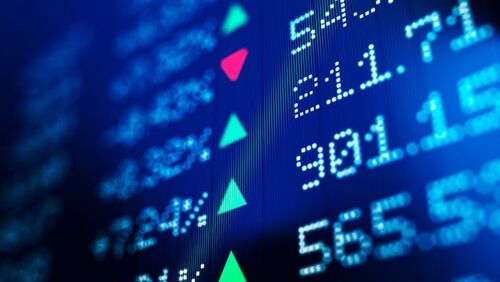Why Telstra's latest dividend isn't as odd as it seems
Telstra maintaining its 8 cent dividend has been framed as odd due to the falling revenue the dividend accompanies, but experts have a different take.
On its face, you can understand why a maintained dividend and falling revenue may seem like an odd couple. Dividends can be barometer for a company's health, a spoil of success rewarded to investors who back the horse.
But Telstra's finances seem to be trending in the wrong direction. Revenue is down 9.7% to $10.98 billion in the six months to December 31. Earnings before interest, tax, depreciation and amortisation (EBITDA) was also down 14.7% to $4.07 billion.
However, investors would be better served judging Telstra by another metric - free cash flow.
"I would suggest those worried about the dividend focus on free cash flow rather than net profit," says Drew Meredith, director and financial adviser at Wattle Partners.
"The total dividend at 8 cents is $951 million and as a result does not represent all of Telstra's cash flow, as it has at various times in the past."
Free cash flow for financial year 2020 was $3.4 billion and $1.9 billion in the first half of financial year 2021.
Others agree that free cash flow should be the point of investor focus.
"Despite the fall in profit, Telstra's dividend is supported by cash flows and an improving outlook for the mobile industry," says Scott Kelly, a portfolio manager at DNR Capital.
"Telstra has not only maintained the 8 cents per share for the first half of 2021, but also given guidance for another 8 cents per share for the second half of financial year 2021."
Adding to the consensus view among experts, Patrick Potts points out that Telstra generates cash flow in excess of its earnings.
"In the first half result, free cash flow rose approximately 80% against operating earnings falling approximately 12%."
"As dividends are paid from cash flow, the strong cash generation can support the current dividend."
For Telstra, maintaining the dividend is a nod to a future of fair winds and following seas rather than an acknowledgment of the past.
"After a decade of disruption following the creation of the NBN, and with its rollout now declared complete, we can clearly see the path to underlying growth ahead of us," says Telstra CEO Andy Penn.
"Telstra today is a leaner, more responsive, and more agile company than it has ever been."
Indeed the nbn has long been a ball and chain for the telco, but those days seem to be behind it.
"The sale or demerger of their infrastructure and tower assets is likely to provide a significant cash flow or realisation event," says Meredith.
"The new entity will be the primary source of income, with the existing 5G business lower-yielding but higher growth."
For these reasons, experts think Telstra will continue to improve its market position.
"As the business grows into financial year 2022, tight working capital management, cost-out and the potential sale of the InfraCo tower assets could yield a significant windfall which would support the continuation of the 16 cents per share dividend and/or other forms of capital management," says Andrew Peros, Deputy Head of Equities Research at Ausbil.
"The average yield of the S&P/ASX100 is 2.9%, compared to Telstra's grossed up dividend yield of 4.9%, and with the Telstra dividend profile being de-risked, we think this could potentially be appealing for investors chasing income."
Get stories like this in our newsletters.



